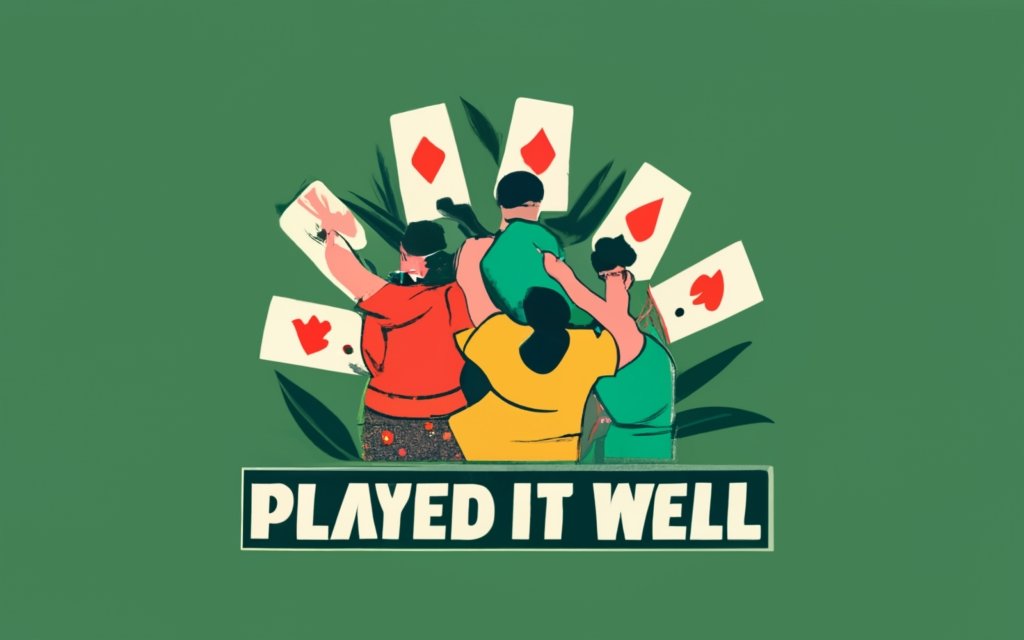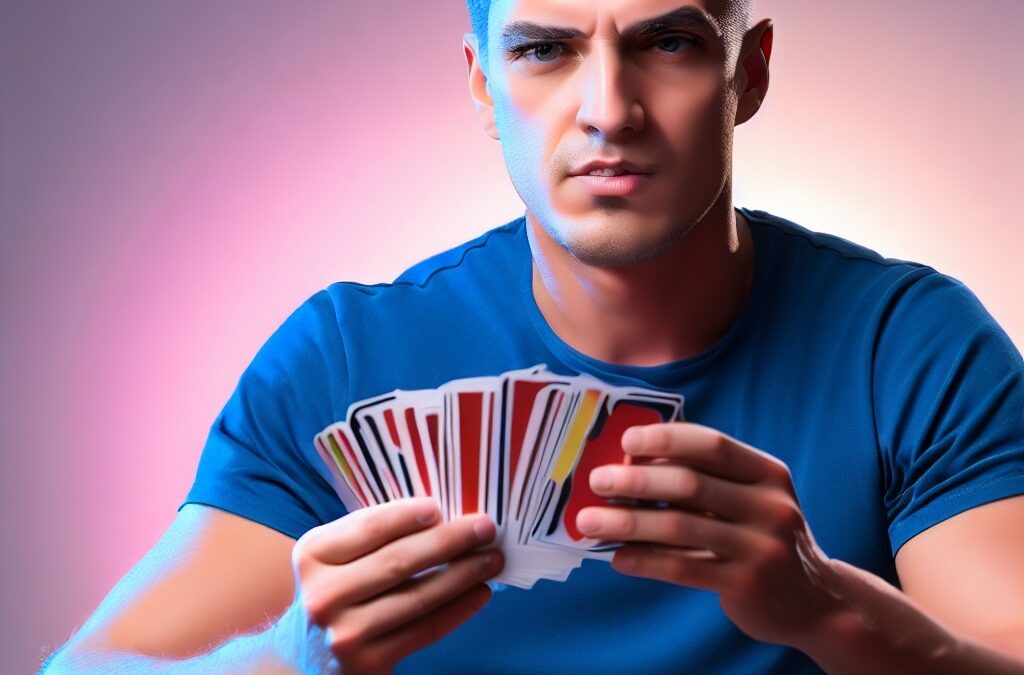Coming across a shuffle of cards while cleaning that messy drawer? It’s likely that you’ve forgotten how many cards there should exactly be in a deck. Your uncertainty can be put to rest with this enlightening and fun-filled article “How Many Cards Are In A Deck”. This piece helps you understand simply and explicitly how many cards typically fate a deck, the significance of each, and where missing or extra cards might have come from. So, don’t toss that deck aside just yet, you might be in for some card-learning surprise.

This image is created by Microsoft designer .
Check out this Online Casino is offering 100% Match on deposit amount
Overview of a Standard Card Deck
From ancient armies clashing on stone tables to modern-day games at cozy family gatherings, card play has been enjoyed throughout the centuries. The standard card deck, as we know it today, has an interesting history that spans across continents and cultures.
Origins of the standard deck
The origins of the standard card deck can be traced back to the Far East. Cards were initially used for fortunetelling and gambling in China during the Tang Dynasty around the 9th century AD. The designs and symbols evolved as they traveled through India, Persia, Egypt and into Europe in the 14th century. The 52-card deck that you are familiar with was standardized in France in the 15th century and spread throughout Europe and eventually, the world.
Popularity and usage of standard decks
The standard card deck is popular for its versatility and ease of use. It’s application straddles education, leisure, and professional gambling. From teaching math and probability concepts to children, to providing high-stakes thrills in casinos, the standard card deck has undoubtedly cemented its place in our society.
Composition of a Standard Card Deck
Four suits of the deck
A standard deck is composed of four suits: hearts, diamonds, clubs and spades. Each suit has thirteen ranks of cards, an arrangement which mirrors the 13 lunar cycles in a year. The red suits, hearts, and diamonds, stem from the French representations of love and wealth respectively. The black suits, spades, and clubs, symbolize war and labor.
Values of the cards in each suit
Each suit contains cards numbered from 2 to 10, along with the face cards- Jack, Queen, and King, and an Ace. The numerical cards hold the value equivalent to their number, while the face cards typically hold a value of 10. The Ace, however, is special and can be valued as either 1 or 11, depending upon the game.
Special or unique cards in the deck
The most unique card in the standard deck is the Joker. Introduced in the USA in the 1860s for the game of Euchre, the Joker is a wild card which can represent various other cards based on the rules of the game.
Check out this Online Casino is offering 100% Match on deposit amount
Total Number of Cards in a Standard Deck
Counting the number of suited cards
There are, in total, 52 suited cards in a standard deck. With four different suits, and thirteen different cards in each suit, you can simply multiply 4 by 13 to reach this total of 52.
Counting any special or unique cards
In addition to the suited cards, standard decks often contain Joker cards. Most decks will have two Jokers, but this can vary.
Confirming the total count
Most commonly, including the Joker cards, a standard deck will contain 54 cards. It is always recommended to count your cards before play to ensure a fair game!
Variations in Card Deck Sizes
Smaller card decks
You may sometimes encounter smaller card decks. These often include decks for certain games like “Pinochle” which use 48 cards, or “Euchre” which uses just 24 cards.
Larger card decks
Double-deck games, such as Canasta, use two standard decks together, totaling 108 cards.
Purpose and use of different deck sizes
Different deck sizes enable a wide variety of games, each with unique rules and strategies. They also cater to different numbers of players, and can enhance the fun and complexity of the game.

This image is property of .Microsoft Designer
Check out this Online Casino is offering 100% Match on deposit amount
Regional Differences in Card Decks
European deck differences
European card decks can differ greatly from the standard deck. For instance, the Italian deck has suits of swords, batons, cups, and coins. The Spanish deck has forty cards and removes 8s and 9s from play.
Asian deck differences
Asian decks also have quite unique features. The Japanese Hanafuda deck contains 48 cards with twelve suits, each representing a month of the year.
International standard decks
Despite these regional variations, the 52-card French deck remains the international standard due to its acceptance in global card games such as poker and blackjack.
Decks for Different Games
Decks for Poker
Poker utilizes the full 52-card deck, giving a wide range of hands. The strategies involved and the fame of professional tournaments have helped Poker reach global popularity.
Decks for Bridge
Another game enjoying international acclaim is Bridge. Bridge also uses a full deck and is a game of skill and probability often played in clubs and tournaments.
Decks for Blackjack
Then there’s Blackjack, a simple yet wildly popular casino game played with one or more full decks. The low house edge and straightforward rules make it a favourite among gamblers.
Decks for Solitaire
Who could forget Solitaire, the classic one-player game often played on computers? Whether Klondike, Spider, or Freecell, a full deck is usually used.

This image is property of images.pexels.com.
Check out this Online Casino is offering 100% Match on deposit amount
Specialty and Collectors Decks
Effect of design and art on card count
Deck design and art don’t usually affect the card count. However, some unique decks might include additional cards to showcase artwork or information about the design.
How collector’s items may vary from standard decks
Collector’s decks can greatly deviate from the standard deck. Themed decks might replace traditional suits with relevant symbols. There can also be additional cards, like limited edition art cards, that serve as collector’s items.
Understanding the Role of Jokers in a Deck
Origins of the Joker card
The Joker, a unique card that holds many faces. Its origins date back to the USA in the 1860s when it was introduced to the game of Euchre as a trump, or top, card.
Usage of Jokers in different games
While not used in many standard card games, some games, such as Canasta and Crazy Eights, incorporate Jokers as wild cards.
How Jokers add to the total card count
Jokers can bring the total card count in a deck to 54. However, if you’re playing a game that doesn’t use Jokers, make sure to remove them before play.
Significance of Card Count in Games
Effect of card count on game play
The total card count has a significant impact on gameplay. It influences the probabilities of drawing specific cards or combinations, shaping strategies and decisions in the game.
How card count contributes to game strategy
Knowing the total count, you, and understanding how it impacts the odds can help you fine-tune your strategy. For instance, if you’re playing Poker and know how many cards are left, you can gauge your probability of landing a flush.
How Decks are Manufactured
Standard process for creating a deck
The process of creating a deck involves a unique blend of art and mass production. Cards are often designed digitally, then printed, cut, and packaged by machines for perfect precision.
Quality control for ensuring correct card count
Strict quality control measures ensure that the correct number of cards is incorporated in every deck. After the cards are cut, they are counted and collated into complete decks. Advanced machinery and human oversight collectively ensure the accuracy of the deck’s card count.
So, whether you’re practicing magic, engaging in a high-stakes Poker game, or enjoying Solitaire on a quiet evening, remember every card in your hands holds a piece of history and an opportunity for strategy.
Check out this Online Casino is offering 100% Match on deposit amount

